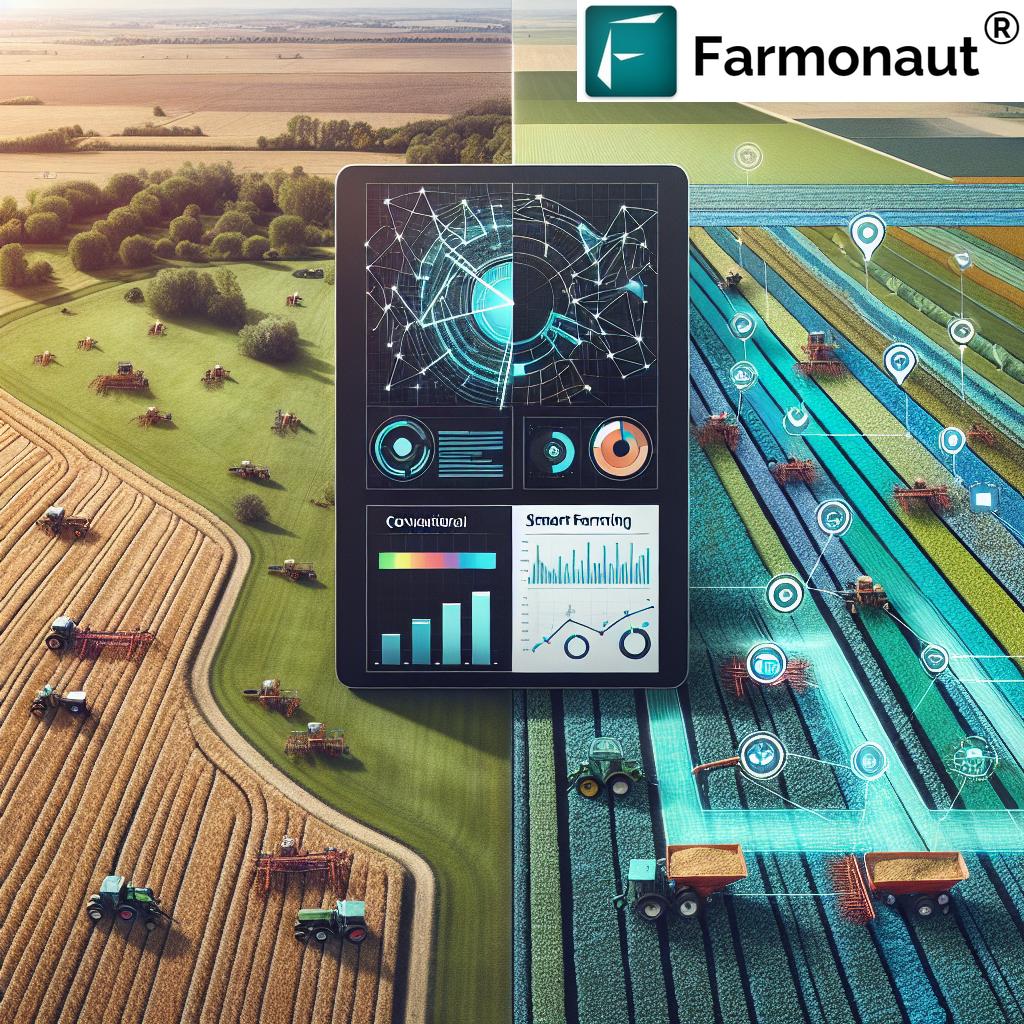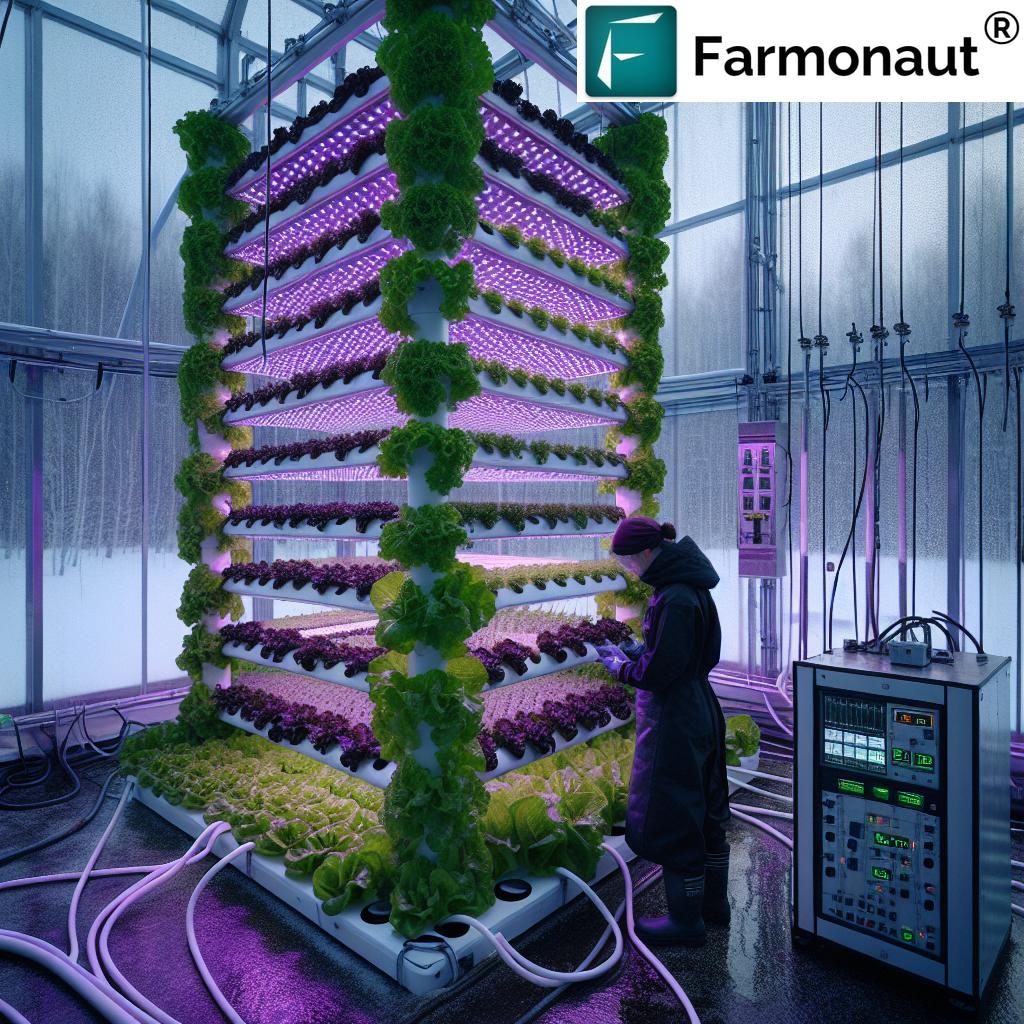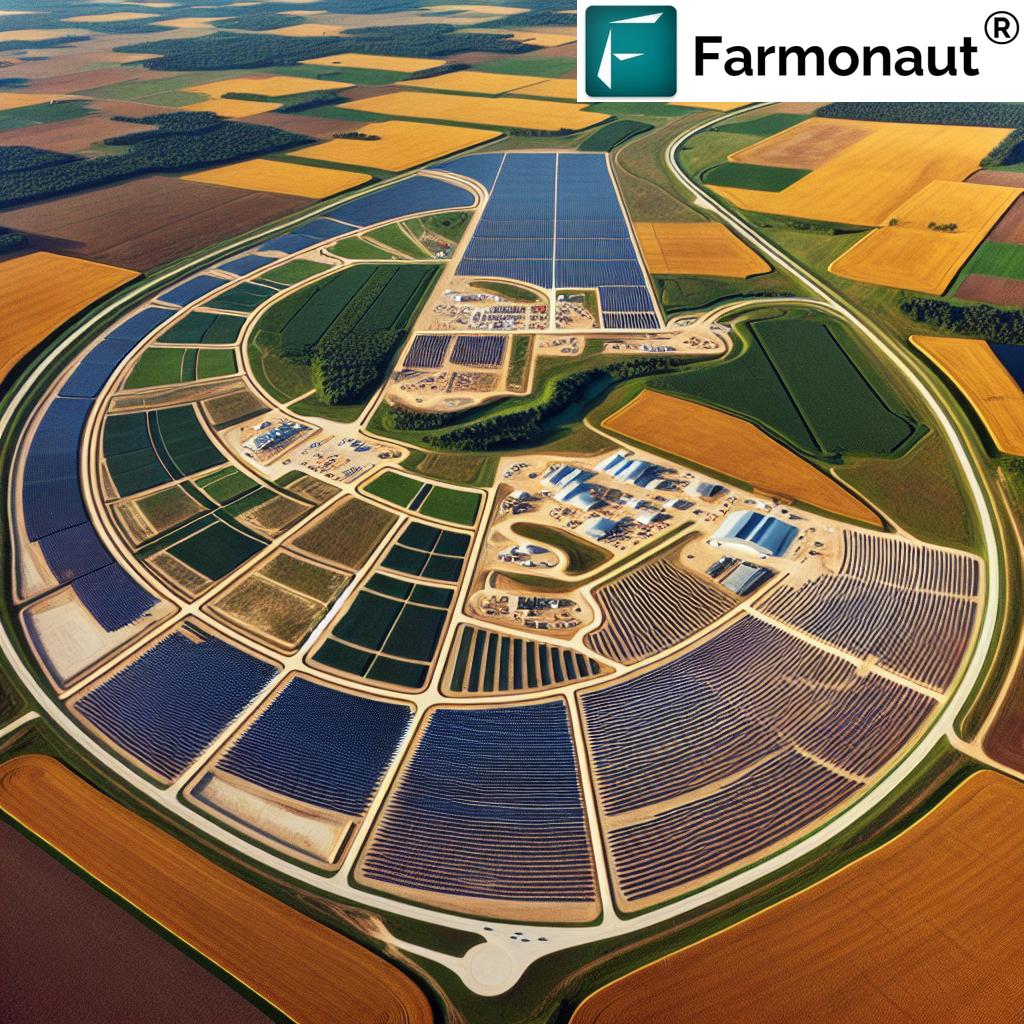Revolutionizing California’s Agriculture: How GIS and Precision Farming Are Shaping the Future of Sustainable Crop Production
“California’s agricultural sector contributes approximately 2% to the state’s GDP while using less than 3% of its land area.”
Welcome to our comprehensive exploration of how Geographic Information Systems (GIS) and precision farming techniques are transforming California’s agricultural landscape. As we delve into the latest agricultural technology trends and their profound impact on food security in 2024, we’ll uncover the innovative approaches that are revolutionizing crop yield optimization and sustainable agriculture practices.
The Evolving Landscape of California’s Agriculture
California has long been known as America’s breadbasket, producing a significant portion of the nation’s fruits, vegetables, and nuts. However, the agricultural sector faces numerous challenges, including water scarcity, climate change, and the need for increased productivity to meet growing food demands. In response to these pressures, the industry is turning to advanced technologies and precision farming techniques to ensure a sustainable and prosperous future.
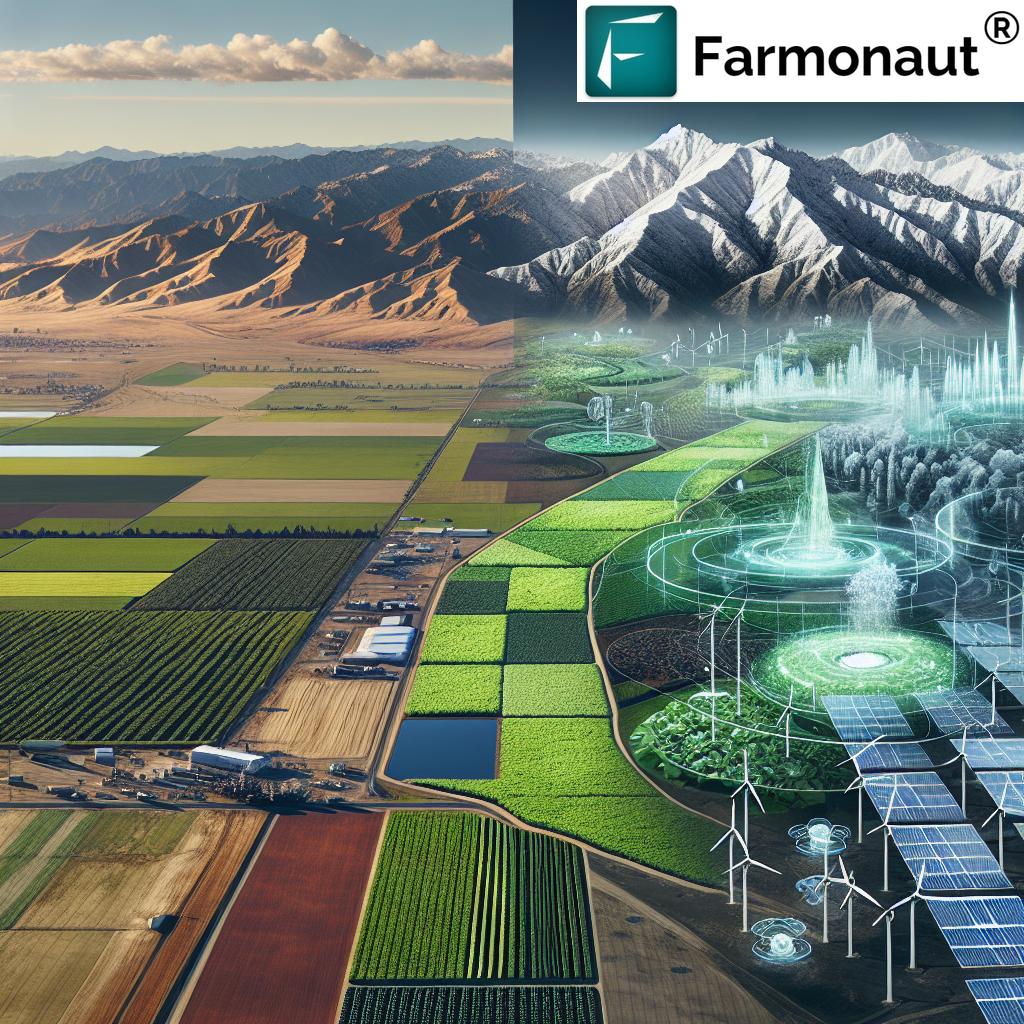
GIS in Agriculture: A Game-Changer for California Farmers
Geographic Information Systems (GIS) have emerged as a powerful tool in the agricultural sector, offering unprecedented insights into land use, crop health, and resource management. Here’s how GIS is making a difference in California’s farms:
- Precision Mapping: GIS technology allows farmers to create detailed maps of their fields, including soil composition, topography, and crop varieties.
- Resource Optimization: By analyzing spatial data, farmers can make informed decisions about irrigation, fertilization, and pest control, leading to more efficient use of resources.
- Yield Forecasting: GIS models can predict crop yields based on historical data and current conditions, helping farmers plan for harvests and market demands.
- Environmental Monitoring: The technology aids in tracking environmental factors such as soil erosion and water quality, promoting sustainable farming practices.
The integration of GIS in agriculture has opened up new possibilities for sustainable crop production, aligning perfectly with California’s goals for environmental stewardship and economic growth.
Precision Farming Techniques Transforming California’s Fields
Precision farming, also known as precision agriculture, is a management concept that utilizes detailed, site-specific information to precisely manage production inputs. In California, several key precision farming techniques are gaining traction:
- Variable Rate Technology (VRT): This allows farmers to apply different amounts of inputs (such as fertilizers or water) to specific areas of a field based on need.
- Satellite Imagery and Remote Sensing: These technologies provide real-time data on crop health, allowing for timely interventions.
- IoT Sensors and Smart Irrigation Systems: Connected devices monitor soil moisture, weather conditions, and plant health to optimize irrigation schedules.
- Drone Technology: Unmanned aerial vehicles (UAVs) are used for crop scouting, mapping, and even targeted pesticide application.
- AI and Machine Learning: Advanced algorithms analyze farm data to provide predictive insights and decision support.
These precision farming techniques are not just improving yields; they’re also contributing to more sustainable agriculture practices by reducing waste and minimizing environmental impact.
The Economic Impact of Precision Agriculture in California
The adoption of precision farming techniques is having a significant economic impact on California’s agricultural sector:
- Increased Productivity: Precision farming can boost crop yields by 20% or more while reducing input costs.
- Water Conservation: Smart irrigation systems have been shown to reduce water usage by up to 30%, a critical factor in drought-prone California.
- Labor Efficiency: Automation and precision technologies help address labor shortages and reduce operational costs.
- Market Competitiveness: By producing higher quality crops more consistently, California farmers can maintain their edge in both domestic and international markets.
As these technologies continue to evolve and become more accessible, we expect to see even greater economic benefits for California’s agricultural community.
Sustainable Agriculture Practices Enabled by Technology
Sustainability is at the forefront of California’s agricultural goals, and precision farming technologies are playing a crucial role in achieving these objectives:
- Reduced Chemical Use: Targeted application of pesticides and fertilizers minimizes environmental impact and promotes soil health.
- Conservation Tillage: GPS-guided equipment allows for precise tillage, reducing soil erosion and preserving soil structure.
- Carbon Sequestration: Precision farming practices can help increase soil organic matter, contributing to carbon sequestration efforts.
- Biodiversity Protection: By optimizing land use, farmers can set aside areas for wildlife habitats and ecological corridors.
These sustainable practices not only benefit the environment but also contribute to the long-term viability of California’s agricultural industry.
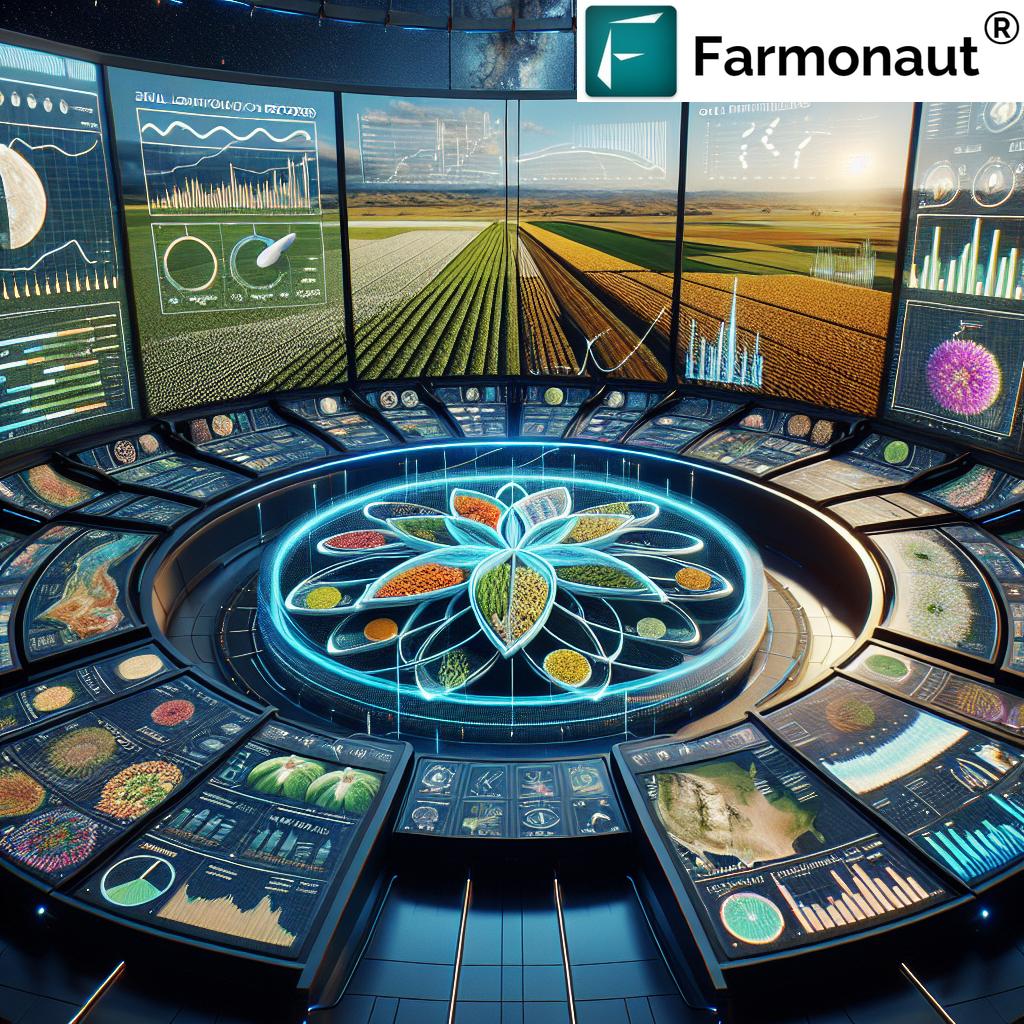
The Role of Farm Management Software in Modern Agriculture
Farm management software has become an indispensable tool for California’s farmers, integrating various aspects of precision agriculture into user-friendly platforms. These software solutions offer:
- Data Centralization: Bringing together information from multiple sources for comprehensive farm management.
- Real-time Monitoring: Providing up-to-date information on crop health, weather conditions, and equipment status.
- Decision Support: Offering data-driven recommendations for planting, irrigation, and harvesting.
- Financial Management: Tracking expenses, revenues, and profitability at a granular level.
By leveraging these sophisticated software tools, California farmers can make more informed decisions, leading to improved efficiency and profitability.
“GIS-based precision farming techniques can increase crop yields by up to 20% while reducing water usage by 30%.”
Agricultural Data Analytics: Driving Informed Decision-Making
The power of big data is being harnessed in California’s agricultural sector through advanced analytics. This approach is transforming how farmers understand and manage their operations:
- Predictive Analytics: Forecasting crop yields, pest outbreaks, and market trends to inform planning and risk management.
- Performance Benchmarking: Comparing farm performance against industry standards and identifying areas for improvement.
- Supply Chain Optimization: Analyzing production and distribution data to streamline the journey from farm to table.
- Climate Modeling: Using historical and real-time data to prepare for and mitigate the effects of climate change on agriculture.
The insights derived from agricultural data analytics are enabling California farmers to make proactive, data-driven decisions that enhance both productivity and sustainability.
The Future of Food Production in California
As we look to the future, several key trends are shaping the trajectory of California’s agricultural sector:
- Vertical Farming: Urban agriculture solutions that maximize space and reduce transportation costs.
- Gene Editing: Developing crop varieties that are more resilient to pests, diseases, and climate change.
- Robotics and Automation: Addressing labor shortages and increasing efficiency in planting, maintenance, and harvesting.
- Blockchain Technology: Enhancing traceability and transparency in the food supply chain.
These innovations promise to further revolutionize California’s agricultural landscape, ensuring its position as a leader in sustainable and productive farming practices.
Comparative Analysis of Precision Farming Techniques in California
| Precision Farming Technique | Technology Used | Crop Yield Improvement | Water Conservation | Cost Savings | Environmental Impact | Adoption Rate in California |
|---|---|---|---|---|---|---|
| Satellite-based crop monitoring | GIS, Remote Sensing | 15-20% | 20-25% | $50-100/acre | Positive (reduced chemical use) | 60-70% |
| Drone-assisted field mapping | UAV, Imaging Sensors | 10-15% | 15-20% | $30-80/acre | Positive (targeted applications) | 40-50% |
| IoT-enabled soil moisture sensors | IoT, Sensor Networks | 10-20% | 25-30% | $75-125/acre | Very Positive (optimized water use) | 50-60% |
| AI-powered crop disease detection | AI, Machine Learning | 15-25% | 10-15% | $60-110/acre | Positive (early intervention) | 30-40% |
| Variable rate irrigation systems | GPS, Sensor Technology | 20-30% | 30-40% | $100-150/acre | Very Positive (precise water application) | 45-55% |
Addressing Environmental Challenges Through Technology
California’s agriculture faces significant environmental challenges, including water scarcity, soil degradation, and climate change impacts. Precision farming technologies are playing a crucial role in addressing these issues:
- Water Management: Smart irrigation systems and soil moisture sensors help conserve water in drought-prone regions.
- Soil Health: Precision application of inputs and conservation tillage practices promote long-term soil fertility.
- Climate Adaptation: Data-driven decision-making helps farmers adapt to changing climate patterns and extreme weather events.
- Emissions Reduction: Optimized use of machinery and inputs contributes to reduced greenhouse gas emissions from agricultural activities.
By leveraging these technologies, California’s farmers are not only protecting the environment but also ensuring the long-term sustainability of their operations.
The Economic Landscape of Rural California
The adoption of precision farming techniques is reshaping the economic landscape of rural California:
- Job Creation: New roles in agtech, data analysis, and precision equipment operation are emerging.
- Rural Development: Increased farm profitability is contributing to the revitalization of rural communities.
- Educational Opportunities: Partnerships between farms, universities, and tech companies are fostering innovation and skills development.
- Infrastructure Improvements: The need for high-speed internet and advanced telecommunications is driving infrastructure upgrades in rural areas.
These economic shifts are helping to bridge the urban-rural divide and create new opportunities for California’s agricultural communities.
The Role of Farmonaut in California’s Agricultural Revolution
In the context of California’s evolving agricultural landscape, Farmonaut’s satellite-based farm management solutions are playing a significant role. By providing affordable and accessible precision agriculture tools, Farmonaut is helping California farmers optimize their operations and embrace sustainable practices.
Key features of Farmonaut’s platform that benefit California agriculture include:
- Real-time Crop Health Monitoring: Utilizing multispectral satellite imagery to provide insights into vegetation health and soil moisture levels.
- AI-driven Advisory System: Offering personalized recommendations for crop management based on real-time data and expert knowledge.
- Resource Management Tools: Helping farmers optimize the use of water, fertilizers, and other inputs to improve efficiency and reduce environmental impact.
- Carbon Footprint Tracking: Enabling agribusinesses to monitor and reduce their environmental impact, aligning with California’s sustainability goals.
For more information on how Farmonaut can support your farming operations in California, visit their web application or explore their API for custom integrations.

The Future of Sustainable Crop Production in California
As we look to the future, several trends are set to further transform sustainable crop production in California:
- AI and Machine Learning Advancements: More sophisticated algorithms will provide even more accurate predictions and recommendations for farm management.
- Integration of IoT and 5G Technology: Faster, more reliable connectivity will enable real-time data collection and analysis across vast agricultural areas.
- Blockchain for Food Traceability: Enhancing transparency and trust in the food supply chain from farm to consumer.
- Precision Biotechnology: Developing crop varieties that are more resilient to climate change and require fewer inputs.
These advancements promise to further enhance the sustainability and productivity of California’s agricultural sector, ensuring its continued success in the face of future challenges.
Conclusion: A Sustainable Future for California Agriculture
The integration of GIS and precision farming techniques is revolutionizing California’s agricultural landscape, paving the way for a more sustainable and productive future. By embracing these technologies, California farmers are not only optimizing their operations but also addressing critical environmental challenges and contributing to the state’s economic growth.
As we move forward, the continued adoption of innovative farming practices and technologies will be crucial in ensuring California’s position as a leader in sustainable agriculture. With solutions like Farmonaut providing accessible precision farming tools, even small and medium-sized farms can participate in this agricultural revolution.
The future of California’s agriculture is bright, driven by data, sustainability, and innovation. By harnessing the power of GIS, precision farming, and advanced analytics, we are shaping a future where food security, environmental stewardship, and economic prosperity go hand in hand.
FAQ Section
- Q: How does GIS contribute to sustainable agriculture in California?
A: GIS helps in precision mapping, resource optimization, yield forecasting, and environmental monitoring, leading to more efficient and sustainable farming practices. - Q: What are the main benefits of precision farming for California farmers?
A: Precision farming increases crop yields, reduces water and input usage, improves labor efficiency, and enhances overall farm productivity and sustainability. - Q: How is technology addressing water scarcity in California agriculture?
A: Smart irrigation systems, soil moisture sensors, and precision water application techniques enabled by technology can reduce water usage by up to 30%. - Q: What role does AI play in modern California farming?
A: AI is used for predictive analytics, crop disease detection, automated farm management decisions, and optimizing resource allocation across farms. - Q: How are precision farming techniques impacting the rural economy in California?
A: These techniques are creating new job opportunities, driving rural development, fostering educational partnerships, and improving rural infrastructure.
For more information on how you can leverage advanced agricultural technologies for your farm, explore Farmonaut’s solutions:


For developers interested in integrating Farmonaut’s technology into their own solutions, check out our API Developer Docs.









